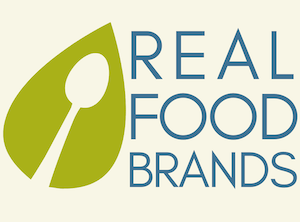When it comes to social interactions, anyone you ask would say that they greatly prefer investing their time with people who “keep it real” — someone who they know what to expect when they spend time together.
When it comes to business interactions, people want the same thing. Shoppers want to know they can trust the businesses they are building relationships with, and a brand that is inconsistent feels like a friend who is inconsistent. And when we confuse people, we lose people.
Your brand strategy (vision, competitive review, ideal audience, positioning and more) serves as your “north star” and should guide you and your teams decisions in both the front end and backend operations of the business to create brand consistency in everything you do.
When you are implementing your brand strategy, consistency is key to building trust with your ideal consumers.
For instance, if your brand has one vibe on social media and your packaging has an entirely different feel, or you have one voice via email and a completely different tone when the reader gets to your website, you are damaging trust with your audience. Similarly, how does your brand’s product formulation (ingredients, texture, taste) deliver against your brand promises?
Some food and beverage brands find themselves in the situation where they can identify major inconsistencies right away. Others have a harder time seeing that things aren’t aligned, and understanding the problem in consumer trust that inconsistent brand activation poses for food companies.
One way to assess your current situation is to bring all of your major elements into one room and conduct a One Room Test.
Here are some things that you will want to physically lay out on one big table:
- Website
- Packaging (front & back to see messaging and ingredients)
- Promotional marketing materials (print and online ads, sell sheets, shelf talkers, etc)
- Customer service scripts
- Employee training manuals
- Sales power points
- What else will you add?
There may be major inconsistencies in things that have been implemented piecemeal over time. If so, at least now you see the opportunity and can prioritize the need to change. Other times, it is a quick, cheap fix like updating the wording of your website content or your social media bio. No matter how small it may seem, ensuring consistency across the board for your brand is a major way to help consumers understand your brand and why they need it, which builds trust with and ultimately increase your trial and repeat sales.
Download your Brand Scorecard Checkup to see how you rank on 25 key factors for brand consistency.
Now, let’s go shake up shopping carts!
In This Episode:
- Why Ainsley was inspired to start her own company while working in CPG at a large food company.
- How taking a brand management mindset will help you and your team build your brand.
- Why your brand is more than a logo, and your marketing is so much more than advertising and promotions!
- “The Four P’s of Marketing”
- Pricing
- Product
- Placement
- Promotion
- Why you must have consistency in your branding across ALL areas of your business.
- How packaging consistency helps customers trust your brand more
- How small things matter, and simple tweaks can often lead to better brand consistency and building trust.
- A special deal for listeners to access Ainsley’s Build Your Healthy Food & Beverage Business Virtual Summit.
Quotes:
“In branding the place you want to be is to have people so in love with your product that they do the selling for you.” — @AinsleyMoir
“There are so many options out there, so if people aren’t sure what they’re going to get from one brand, they’re going to default into one that they can rely on. That’s not just product quality, but an emotion that they’re going to have.” — @AinsleyMoir
“Confused minds don’t buy.” — @AinsleyMoir
“You need to be able to say something about yourself that other people cannot say about their product.” — @AinsleyMoir
Resources:


